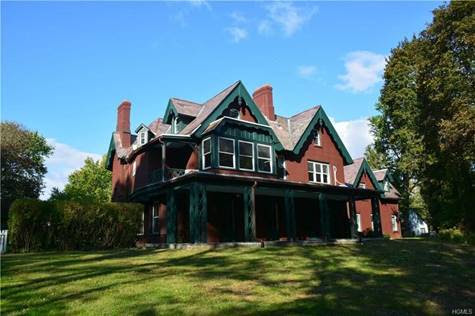Monday, November 30, 2020 – THE ARCHITECT WHO DESIGNED CHAPEL OF THE GOOD SHEPHERD


Monday, November 30, 2020
Our 223rd Edition
FREDERICK CLARKE WITHERS
STEPHEN BLANK

Frederick Clarke Withers
It is a small island, but there are those who have loved it. Including several world famous architects. Most well-known, of course, is James Renwick Jr. who designed St Patrick’s Cathedral on Fifth Avenue and our own Smallpox hospital. Jose Luis Sert’s firm, Sert, Jackson & Associates, did the design for Eastwood and Westview and, before that, Philip Johnson and John Burgee prepared the initial and very ambitious masterplan for the island.
Another architect, famous in his day and but much forgotten now, also left a significant mark on the island. Frederick Clarke Withers, a champion of Gothic Revival, designed The Chapel of the Good Shepherd (in many ways, the centerpiece of our island), the Strecker Laboratory and three brick structures for the almshouse.
Withers was born in Somersetshire, England, educated in King Edward’s school and then studied architecture. He came to the United States in 1852 at the invitation of the renowned American landscape architect, Andrew Jackson Downing. Withers and Downing were not just partners but also became family, when they married sisters: Emily Augusta and Caroline Elizabeth DeWindt, respectively. The sisters were great-grandchildren of President John Adams, and grandnieces of John Quincy Adams.
Withers was primarily considered an ecclesiastical architect and published the influential book “Church Architecture” in 1873. He was a strong advocate of the Gothic style for churches, and the Chapel of the Good Shepherd illustrates his conceptions and ideas of what a church should be.

A rendering of Glenbrook by Withers. Image via The Horticulturist
A word about Gothic Revival
Gothic Revival is an architectural movement that began in the late 1740s in England. Its momentum grew in the early 19th century among opponents of the neo-classic style (think Washington DC) that, to them, signified republicanism and liberalism and the flow away from more traditional religion. The Gothic Revival movement’s roots are intertwined with deeply philosophical movements associated with Catholicism and a re-awakening of high church or Anglo-Catholic belief concerned by the growth of religious nonconformism. By the mid-19th century, it was established as the preeminent architectural style in the Western world (see for example, the British parliament’s Palace of Westminster in London, the Canadian Parliament Buildings in Ottawa and the Hungarian Parliament Building in Budapest).

Back to Withers
Although he retained his British citizenship, Withers was one of the first members of the newly founded American Institute of Architects. After Downing’s death in the explosion of the steamboat Henry Clay, Withers volunteered for service in the Union Army in 1861. He was invalided out of the service the following year, recovered, and resumed practice in New York City, joining Calvert Vaux, Downing’s former partner, and Frederick Law Olmstead in a partnership that lasted until 1871. Finally, in 1888 Withers formed a partnership with Walter Dickson. Together as supervising architects for the Board of Charities and Correction they designed several buildings on Roosevelt Island. In 1897 Withers retired to his home in Yonkers.
Withers was known for his church architecture, but undertook other projects as well. His most enduring monument in New York City is the Jefferson Market Courthouse and Jail designed in the Italian Gothic style that currently houses the Greenwich Village branch of the New York Public Library. It is an ingenious organization of spaces compacted into an odd, triangular site. A bell tower in the corner commands a view up and down Sixth Avenue in New York City. Withers incorporated the functions of police court, district court, and fire observatory in a structure which many consider his masterpiece. (The building was called “Jefferson Market” because the site chosen, in 1870 was at the time the Jefferson Market, the local produce market.) Other New York commissions included the commercial building at 448 Broome Street in the SoHo-Cast Iron Historic District, the high altar in Trinity Church, the lich gate of the “Little Church Around the Corner” (Church of the Transfiguration), and the City Prison which replaced the original “Tombs.”

The Chapel of Good Shepard
The Chapel was commissioned by George M. Bliss (1816-1896), an important New York banker, who began his career in the dry goods business. It was established by the Protestant Episcopal Mission Society to serve Protestant inmates of the almshouses on Blackwell’s Island.
Originally to have cost $5000 the cost of the chapel eventually exceeded $75,000, due to the ever increasing demands and generosity of its donor. Francis Kowsky, in his book The Architecture of Frederick Clarke Withers, tells us something about the architect’s vision for the Chapel: “The nature of the Welfare Island parish compelled Withers to devise an unusual church for the society.
To maintain the segregation of the male and female inmates, Withers introduced twin entrance porches, one for each sex, on the western elevation. The portals lead into a deep vestibule, which contains two stairways in line with the entrances. These flights of steps ascend to doors in the north (male) and south (female) sides of the wide nave. Between the stairways, a central flight of steps descends to a reading room and other facilities in the basement.
This triple division is developed on the entrance wall of the nave, where a baptismal font sits in a large niche between the two portals. The present interior preserves the warmth and simple dignity of Withers’s original scheme. ‘The brick walls are…faced on the inside with brown enameled brick as high as the stone string-course under the windows,’ records a contemporary description, ‘and above it the whole of the interior walls are of buff-colored pressed-brick laid in red mortar. . .
The roofs (of the nave and apse) are open timbered, constructed in Georgia pine and finished in panels with moulded ribs, etc.’ In the northeast corner of the nave, Withers located the organ chamber, which projects on the exterior to form an L-shaped mass with the tower. By placing the tower at the juncture of the nave and apse, Withers avoided the jumble of forms that could have resulted had the tower been positioned near the western facade. The location of the tower on the north side also insured a satisfactory composition for the elevation that faced the primary approach road.
The Chapel of the Good Shepherd illustrates that Withers still possessed the ability to seek imaginative solutions for out-of-the-ordinary commissions’ He expressed obvious, pride in the work by conspicuously placing his monogram in the apex of the facade gable.” What Kowsky does not discuss is the lovely acoustics of the Chapel beloved by many Roosevelt Island residents who have luxuriated in the soft, splendid sound of music performed there.


Strecker Memorial Laboratory
Strecker Memorial Laboratory, although small in size, is monumental in its overall effect. Essentially Romanesque Revival in style, similar in manner to the late work of Henry Hobson Richardson, suggested by the broad arched openings and the use of rough-faced stone-gray gneiss, quarried on the island and used for many of its institutional buildings. The use of contrasting orange brick for quoins, sting courses, and the arches gives the building a vivid polychromatic effect that is reminiscent of Wither’s earlier compositions in the Victorian Gothic style. As a result of the non-ecclesiastic building type as well as the change in the style from Gothic, which Withers generally favored, to Romanesque it can be surmised that Dickson was largely responsible for the design.
Live in a Withers home?
On a tree-lined street in Balmville, a hamlet adjoining the northern edge of Newburgh, is a house with a direct connection to 19th century Gothic Revival architects. Glenbrook was designed by Withers around 1856 for David and Pauline Clarkson and is more of a grand villa than a modest country cottage. Among his other interests, Wither who settled in Newburgh when he came from England, together with Downing and others, explored new forms for practical living and home design. Glenbrook is located at 60 Balmville Road, but alas, is no longer on the market. Guess we’ll just have to stay here.
Stephen Blank
November 27, 2020


MEET THE NEW MEMBERS OF THE R.I.H.S.
WE HAVE THREE NEW OWLS AVAILABLE AT THE KIOSK.
OUR FLOCK OF BIRDS ARE JOINING OUR SQUIRRELS FOR YOUR “ADOPTION” AT THE KIOSK.
MONDAY PHOTO OF THE DAY
Send your submission to:
rooseveltislandhistory@gmail.com

WEEKEND IMAGE
PAN AM WORLDPORT AT JFK
Andy Sparberg and Clara Bella were the first to get it

FREE COVID-19
TESTING
HOSPITAL WALK IN COVID-19 TESTING
NYC HEALTH + HOSPITAL METROPOLITAN
1901 First Avenue,
New York, NY 10029 at 97th Street
call (844) 692-4692
9AM-3:30PM
Daily Free Diagnostic Testing (Third-party Verified)
Screening Required
No appointment needed
Text by Judith Berdy Thanks to Bobbie Slonevsky
for her dedication to Blackwell’s Almanac
Thanks to Deborah Dorff for maintaining our website
Edited by Melanie Colter and Deborah Dorff
All materials in this publication are copyrighted (c)
http://www.lehman.edu/vpadvance/artgallery/arch/bio/clarke%20Withers.html
https://tclf.org/frederick-clarke-withers
http://www.nycago.org/Organs/NYC/html/GoodShepherdEpisBlackwellsIs.htm
MATERIAL COPYRIGHT WIKIPEDIA, GOOGLE RIHS ARCHIVES AND MAY NOT BE REPRODUCED WITHOUT PERMISSION (C)
FUNDING PROVIDED BY ROOSEVELT ISLAND OPERATING CORPORATION PUBLIC PURPOSE GRANTS CITY COUNCIL REPRESENTATIVE BEN KALLOS DISCRETIONARY FUNDING THRU DYCD


Copyright © 2020 Roosevelt Island Historical Society, All rights reserved.
Our mailing address is:
rooseveltislandhistory@gmail.com

Leave a comment